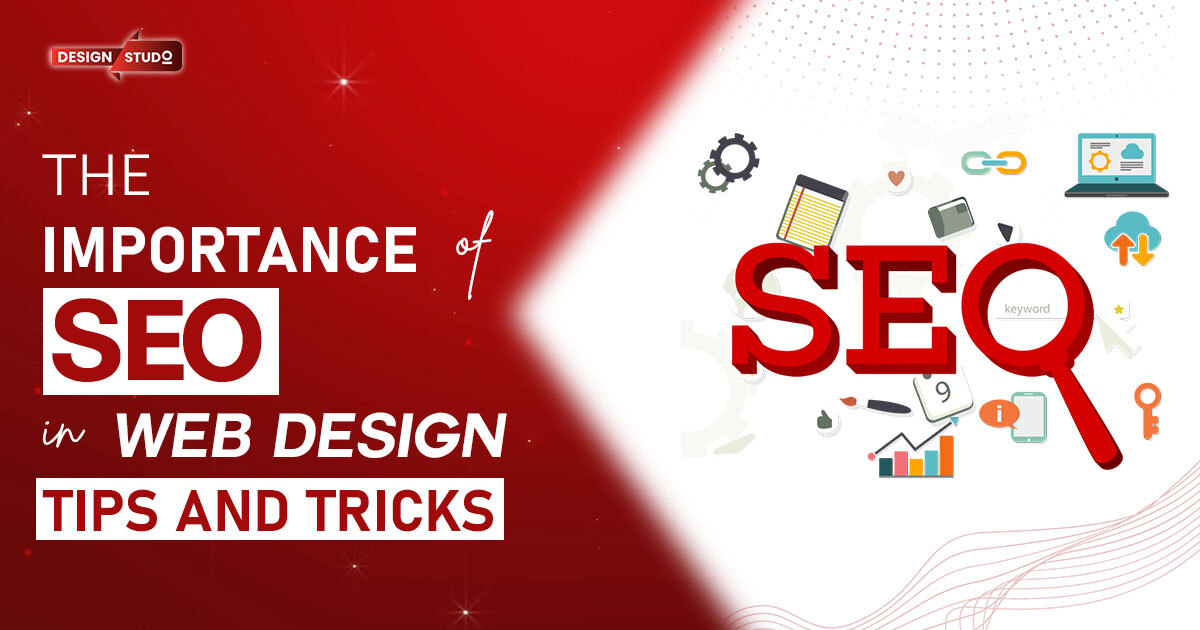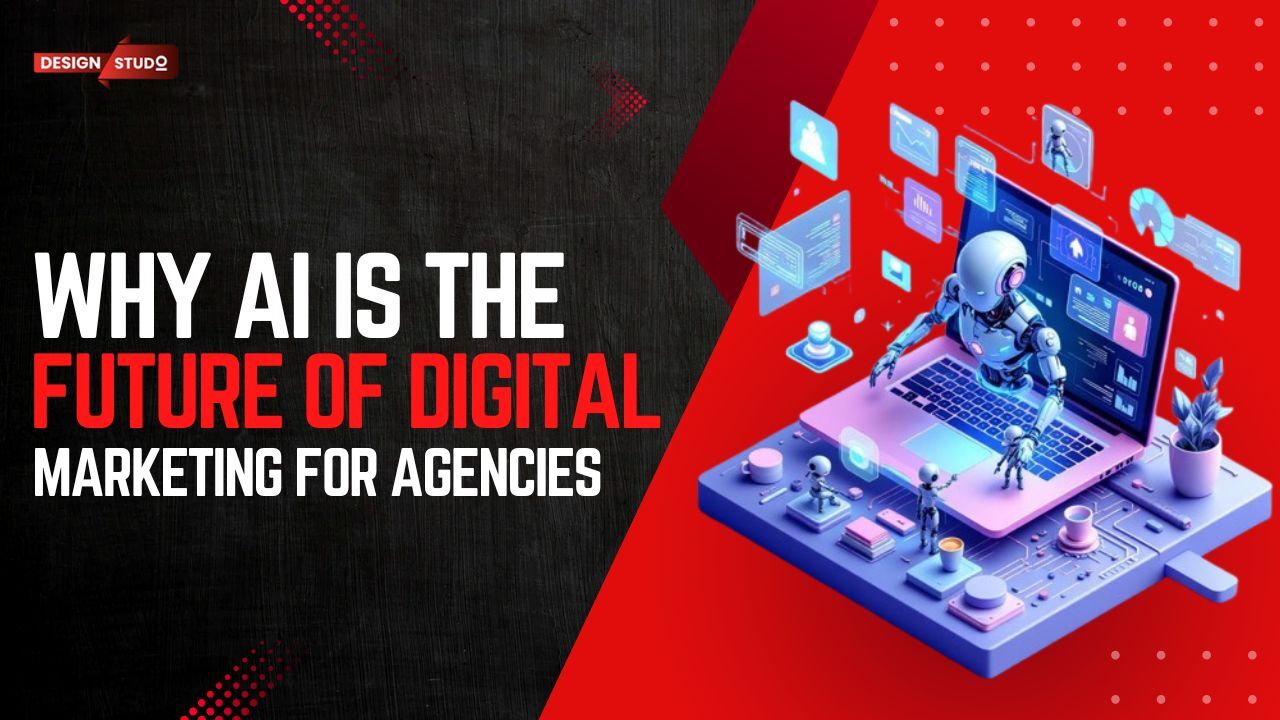In today’s digital age, every business wants to establish a strong online presence. This endeavor is followed by the development of a great website, not only to look good to the eyes but also optimized for the search engines. Effective SEO strategies combined with effective web design will lead to visibility and traffic growth, as well as a better user experience. This blog will discuss why search engine optimization is essential when designing a website and some practical tips to integrate it so well into your website.
Why is SEO Important in Web Design?
SEO is important because it works to attract and maintain users, essentially the ultimate goal of any site. The biggest advantage digital marketing service providers claim is that SEO helps their website to appear in search engines in most cases after its addition, and that’s probably why they are trying to say that is helping you rank better on search engines! But increased visibility means more businesses can get before a greater audience and ultimately convert visitors into loyal customers. No matter how well designed a site is, one without SEO may find it hard to generate organic traffic.
Enhanced User Experience (UX)
When using SEO-friendly web design, navigation is intended to be intuitive, pages load faster, and information is easy to find. Lower bounce rates and longer time spent on your website are made possible by these factors. This means that a good digital marketing service provider will not only care about creating a seamless UX across responsive designs that look and work similarly across all devices.
Higher Search Engine Ranking
SEO and web design also help businesses combine title, headings, and metadata elements. The more informative and user-friendly a website is, the more probable it will be in a search result list on search engines like Google. The more SEO consideration your site has, the higher you’ll be ranked, which means your site will receive more exposure in search results.
Key SEO Tips and Tricks for Effective Web Design
Implementing SEO in web design doesn’t have to be complicated. Here are some practical tips and tricks to ensure your website remains user-focused and optimized for search engines.
1. Start with Keyword Research
SEO is all about understanding the keywords your audience is searching for. When researching and adding appropriate keywords like ‘digital marketing service providers’ to your piece of content, you will generate more relevant content for readers and have a better chance of getting rankings higher in search results. Your tool of choice for identifying relevant keywords in your niche would be Google Keyword Planner, SEMrush, and Ahrefs.
- Tip: Use your target keyword strategically throughout your website, including in titles, headers, image alt tags, and meta descriptions. Avoid keyword stuffing, as it can hurt your SEO.*
2. Focus on Mobile Optimization
With the mobile usage still growing, you need to optimize your website for mobile devices. It all starts with the fact that Google is mobile first indexing, so it bases its ranking on the mobile version of your site. Not only is a mobile-friendly design good for SEO, it is equally important for user engagement.
- Trick: Test your website on various devices to ensure it is responsive and that buttons, forms, and images display correctly. Tools like Google’s Mobile-Friendly Test can provide valuable insights.*
3. Optimize for Fast Loading Speeds
Search engines are looking for page loading speed. Long load times will probably drive the users out of your site, resulting in higher bounce rates. Keeping your site loading fast will allow for a better user experience and SEO.
Tips for Improving Loading Speed:
- Compress images and use formats like WebP.
- Minimize HTTP requests by reducing the number of files loaded on each page.
- Leverage browser caching.
- Use a reliable hosting provider and consider a content delivery network (CDN) for faster performance.*
4. Create SEO-Friendly URLs
On page SEO is labeled with_urls. URL is a critical element of on-page SEO. URL structure helps search engines and users find what they are interested in, making reading the content of a page clearer. I think your URL’s when designing your website should be simple and descriptive and include relevant keywords where possible.
- Example: A URL like www.yoursite.com/digital-marketing-service-providers is more SEO-friendly than www.yoursite.com/p123.*
5. Optimize Meta Descriptions and Title Tags
Meta descriptions and title tags are previews of your page content in search engine results. Your Digital marketing agency in USA title tag can have a big impact on click-through rates, thus getting more visitors to your site.
- Tip: Aim for clear, compelling title tags and meta descriptions that provide a strong summary of what the page offers. Keep titles between 50-60 characters and descriptions around 150 characters to ensure full visibility in search results.*
Don’t forget to checkout:
10 Best Houston-Based Web Design Companies
What’s Ahead for UI/UX Trends in 2024-25?
6. Implement Image SEO
It can impact SEO and user engagement since images help provide more user engagement. All the images should have alt tags (a short description with the most relevant keywords), which helps search engines understand what image content it is about. Good alt tags help us all and help search engine bottom line—iincluding yours!
- Example Alt Tag: “’Digital marketing service providers’ delivering customized SEO solutions.”*
7. Focus on Internal Linking
Internal links, those that connect different pages in your website, help your users navigate and spend more time on your content. They also help with navigation for users and search engines alike to understand your site structure and the hierarchy of your page.
- Trick: Link to related services or blog posts. For instance, if you’re discussing “digital marketing service providers,” link to a detailed service page or case study related to digital marketing.*
8. Prioritize Content Quality
SEO and web design are the backbone of content. Organic traffic comes from quality content, which is of great value for you, the user. Let your blog posts, guides, and some type of service description fit to user intent. It is also good to update your content regularly.
- Tip: Focus on topics that align with your services. For instance, if your business is among ‘digital marketing service providers’, consider writing articles on SEO trends, digital marketing strategies, or social media tips.
Don’t forget to checkout:
American Top Mobile App Designers for 2024-25
How the Google Logo Has Evolved Through the Years
9. Use Structured Data Markup
Schema also helps search engines understand content on your website. It offers more information on your business, products, and services, all in a beautiful format that can show up on search results as rich snippets. It can also enhance your user click-through rate as your site gets more attractive.
- Example: If your business is a digital marketing service provider, use structured data to highlight reviews, services offered, and location information.
10. Ensure a Secure Website
User trust and SEO depend on security. HTTPS is more important to Google than HTTP, and secured (SSL) sites tend to rank better than unprotected ones. Make sure your site is secured with an SSL certificate to ensure you are credibly showing you are. It also ensures your user data is safe.
- Tip: Most web hosting services offer SSL certificates, which can often be installed directly through your provider’s control panel.*
11. Optimize for Local SEO
If you are a digital marketing service provider and offer your service to a local market for a local area, then you need to optimize for local SEO. Local SEO means that they can help your website show up when people search it nearby.
- Trick: Register with Google My Business, use local keywords, and ensure that your contact information is consistent across all online platforms.
12. Conduct Regular SEO Audits
A well-designed, optimized website may still require an occasional SEO audit to know where to make improvements. SEO is a continuous process that keeps changing. Frequent audits help us to keep updated with new search engine algorithm changes and industry trends.
- Tip: Use tools like Google Analytics and Google Search Console to track your website’s performance and uncover areas for enhancement.
Don’t forget to checkout:
Revised Rankings of Leading Webflow Firms for 2024–25
American Logo Design Firms Ranked by Perplexity AI
The Role of Digital Marketing Service Providers in SEO-Driven Web Design
SEO implementation demands expertise, learning new things, and staying updated with the trends. With professional digital marketing service providers, this process becomes much simpler through their expertise in website development, SEO strategy, and user-friendly design. Working with an experienced provider will allow you to establish a site that not only ranks well but also offers a user experience that performs so well it delivers a return on investment for your site.
Final Thoughts
If you want to improve visibility, attract organic traffic, and create an enhanced user experience through your web design, it is important to include SEO into your design. The basics of SEO begin with knowing the audience and creating your content around them through keywords. Then, with the help of the above tips and tricks, you can create an SEO-friendly site that is not only in line with your business objectives but also in terms of your users.
An optimal website is more than just a place to put a presence; it is a powerful way for your audience to connect with you and provide a competitive advantage.
Also check out Design Studio Online GBP…!










